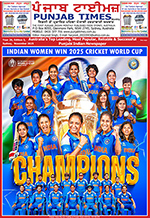Final entrance test, India take on Australia in semi-final, take your seat
India would hope to crack the IIT entrance of cricket i.e Australian hurdle on Thursday at the SCG. (Source: AP)
AFTER India beat Australia in the quarterfinal of the 2011 World Cup, Virender Sehwag had called his friends to check if they wanted to be at the Wankhede and watch India lift the Cup.(Full Coverage| Venues | Fixtures)
“We knew we could beat Pakistan, Sri Lanka or any other team. I was only concerned about the Australia game,” he said. No one does ‘confidence’ better than Sehwag —- it’s no dressing room secret —- and him being ‘concerned’ was a surprise.
That’s the weight of those three words: ‘the Australia game’.
READ: My heart says India but my mind says Australia: Gavaskar
It can concern cricket’s most unconcerned mind. It can make players pensive, net-sessions stretched and team meetings longer. The Australia game, it’s the Class X board exams, or maybe, it’s cricket’s IIT entrance test.
It’s all because, pardon a football parallel, Australia possesses a Brazil-like trophy cabinet, that Azzurri doggedness and the German efficiency. Regardless of the team’s form or composition, ‘the Australia game’ remains world cricket’s perennial ‘high hurdle’.
[youtube http://www.youtube.com/watch?v=wHxwTVk9-AI?version=3&rel=1&fs=1&showsearch=0&showinfo=1&iv_load_policy=1&wmode=transparent&w=640&h=390]
Michael Clarke has played a role in putting together
Australia’s towering reputation. And like power leaders of crack units, he gave a stone cold assessment on Wednesday of the bitter game between teams that aren’t really on back-slapping terms, both on and off the field.
READ: Australia will beat India in the semi-final, predict ‘bookmakers’
“We’ve played a lot of cricket against India. We know their strengths. We know their weaknesses, and we know they’re a very good team. We have to execute our skills as well as we possibly can, and if we do that, I have confidence that we can beat any team we play against,” he said.
Clarke doesn’t have Ricky Ponting’s gum-chewing swagger or Steve Waugh’s icy nonchalance, nor does he have a team of legends like his predecessors. But he and his men do wear the fabled ‘Yellow’, the colour of ODI domination.
Actually, the shade, like the quality of cricketers, has slightly changed. Clarke’s colours are limey and fluorescent. Waugh, Ponting, McGrath, Warne, Hayden, Gilchrist had the sparkle of the sun and a golden hue. But the awe it commands hasn’t diminished. Aussies still make rivals edgy. They still remain the team that rivals want to avoid during final league game calculations.
For the non-Aussie fans, they have, historically, been the spoilsports. They have a knack of pricking the beautifully floating bubbles, ending winning streaks. The Aussies have the power to make you change your heroes, even your sport. They can traumatise you.
Seven wins is a row, 70 wickets, new hero for every game; more than a billion in India will keep a wary watch on SCG on Thursday. With many predicting a Cup encore, an unsolicited word of caution: Do take the day off, believe in the optimism around you, sit on the couch with popcorn and dreams, but have alternate plans. These Aussies are brutal; they can snuff out the fire in you with their first bellowing breath.
On the final day of the 1999 World Cup, the fans wearing green would switch to Lord’s, thinking Wasim Akram would lift the Cup. It didn’t take long for the living rooms across Pakistan to go sparse. Early wickets, Warne’s 4/33, Pakistan 132 all out. After a few hours, the formality. Steve Waugh walks to take the Cup.
Four years later, at Johannesburg, the NRIs at Wanderers were so sure that Sourav Ganguly will fly home with the Cup. That enthusiasm was bludgeoned by the Aussie openers. 100 in a little more than 10 overs, 155 in 25 overs, 359 in 50. After a few hours, the formality. Ricky Ponting walks to take the Cup.
2007 Barbados, a small Indian Ocean Island hoped that it would be 1996 again. Sri Lanka was in the form of their lives. They were on a roll. A 172-run opening partnership, Adam Gilchrist blasts 149, his gloved palm sequestering a squash ball. After a few hours, the formality. Ricky Ponting walks to take the Cup.
Mahendra Singh Dhoni too has walked away with the Cup. He too has a cult. He doesn’t show emotion, his boys are also learning. On match-eve, Rohit Sharma didn’t let the pressure of ‘the Aussie game’ show. He spoke about giving it back, touched on Australia’s troubles against quality fast bowling and Sydney’s spin-friendly surface. As they say, he was looking at the positives. Sharma, a few days after his stunning hundred, didn’t look worried.
But do the others in the Indian dressing have it in them to take the on-field pressure of ‘the Australia game’? This is a bunch that has three World Cup winners but they can’t match the stature of the hardened pros of 2011.
Four years back, the World Cup squad had Sehwag, Gambhir, Tendulkar, Yuvraj, Harbhajan, Nehra, Munaf, Zaheer and even Dhoni. These are men who had seen the worse days.
They had cried in private. They had got calls from family members who feared stone-throwers. So used to failure, they were desperate to avoid it. In the quarterfinal against Australia, Yuvraj Singh and Suresh Raina didn’t give up. They demystified ‘the Australia game’. They leaped over the ‘high hurdle’, the momentum carrying their team over the lower, but more significant, subsequent two.
Sharma said that this young team was different. It certainly has morphed into a more confident unit than the one that was part of the winless tri-series campaign. Those were losers and imposters. This set of World Cuppers bowl fast, bat briskly, field smartly and give it back too. At the SCG tomorrow, they await cricket’s big IIT entrance exam. In case they crack it, ‘the India game’ will be the new ‘the Australia game’.
Source:: Indian Express






